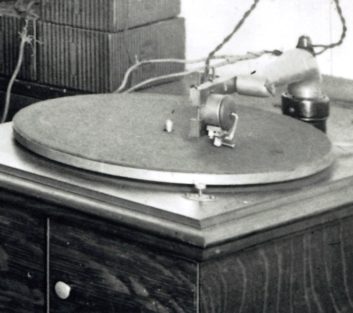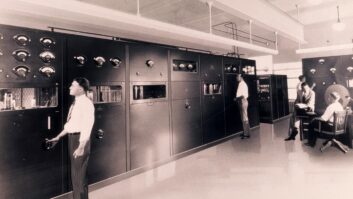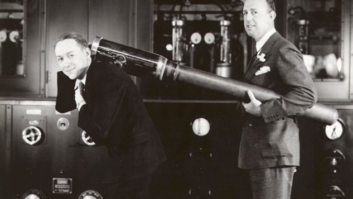
In the Oct. 14 KDKA feature the question is twice asked — including in a Page 21 photo caption — “Did engineer Donald Little invent and fabricate the world’s first transducer for turning record groove modulations into a varying voltage?”
The answer is: Decidedly not. The honor for that advance goes to Gianni Bettini, an Italian army lieutenant who made his fortune in the U.S.A but died and remains back in Italy, having patented electrical recording in 1902.
[Read: Constructing the First “Real” Radio Station]
Bettini took a Berliner microphone, manufactured by Bell’s Western Electric Co. and of the type that went into all the world’s telephones for 100 years (which includes KDKA’s in 1920), pushed a needle through the center of its diaphragm and turned it into a phonograph pickup. Bell, Edison and even disc record “revolutionizer” (no pun intended) Emile Berliner missed it. Had any one of them paid attention we’d have had electrical recording two decades before Western Electric introduced it when they created motion picture sound in 1926 (or was it ’25?).
For Radio World readers it should be noted that the broadcasting business quickly adopted WECo’s 33 1/3 rpm 16-inch disc which inaugurated the quarter-century era of recorded-program dissemination on discs. Interestingly, the four networks — NBC (Red), NBC-Blue, CBS and Mutual (the least heralded yet with the most affiliated stations of all) — engaged my friend Harry Bryant’s Radio Recorders in Hollywood to create what came to be called “transcriptions” for delayed broadcast on the “coast” of shows coming in “live” from New York, Chicago, Pittsburgh and Detroit.





